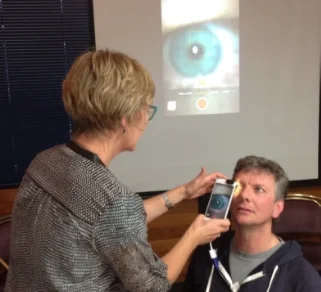There has been an explosion in smartphones, tablets, and e-readers - we are all looking at screens more often. A study in France found smartphone purchases increased by 7% in one year. Three out of 10 French people say they have a tablet.
Most of us are not particularly attached to a single device, using a tablet at home, a smartphone while commuting, a computer at work and so on. The information on our devices is much the same, in content, as that of traditional books, but in a very different form. Books need a linear reading mode punctuated by pages. In comparison you can navigate electronic text using hyperlinks and being able to scroll text on screen. Electronic reading means we interact more with our device. Using a keyboard or touch screen eliminates the idea of the page. Most devices are ‘mobile’ or ‘handheld’ so they can be used in a wide range of everyday situations: while standing in public transport; sitting on a sofa; or lying in bed.
All these changes impact of the design of optical lenses. Reading glasses were designed for reading books. Now we are using devices, lens designers need to know what position our bodies, head and eyes are in, and create lenses to suit.
A new study has investigated our posture when we are 'on' our devices. The key findings were:
- Eye-screen Distance was on average 33cm for smart phones, 38cm for and e-reader and 40cm for tablets. The smaller the screen, the closer the distance of use. These results, also confirmed by Maniwa et al. (2013),16 and Ko et al. (2012),17 show that users reduce their viewing distance when the font size is smaller. But the font size of our devices was also related to their size: 1.5mm for the smartphone, 2mm for the e-book reader and 3mm for the tablet.
By comparison, a study has shown we hold a paper at about 41cm, and write on paper from a distance of 42cm - approximately 8cm further away than a smartphone.
- Downgaze using devices is more pronounced than when we are reading traditional books or print. The angle was greatest (25.6°) for the smartphones compared with tablets and e-readers. This compares to the angle of gaze for traditional reading it 19°
Experimental results found people using digital devices have very stable, even rigid posture.
What next? New lenses are now available which optimise vision for the closer range.
In the meantime for many the data may help explain other body aches and pains we are experiencing associated with these new trends.





